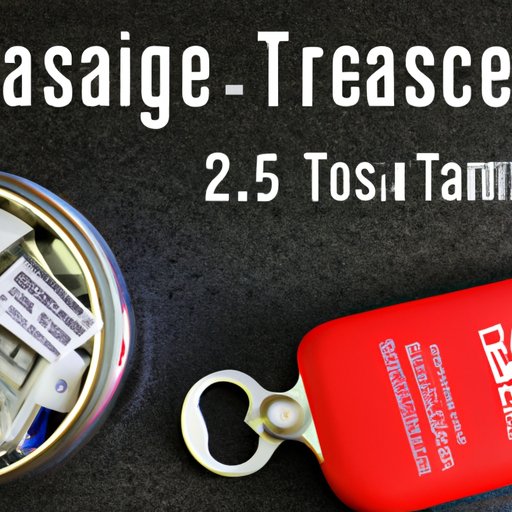
Introduction
Traveling can be exciting, but packing can be daunting, especially if you’re uncertain how much of your liquids, aerosols, and gels you can bring on your flight. Understanding how many ounces you can fly with is important to avoid problems with TSA regulations.
Understanding TSA Regulations
The Transportation Security Administration (TSA) sets the guidelines for what can and can’t be carried in your carry-on or checked bag. The rules for liquids, aerosols, and gels are the most relevant to determining how many ounces you can fly with.
The TSA limits the amount of liquids, aerosols, and gels that passengers can bring. The maximum quantity allowed in a carry-on bag is 3.4 ounces or 100 milliliters per container. Passengers may also have one clear, quart-sized bag of liquids, aerosols, and gels that must be placed in a bin for screening.
It’s important to adhere to the TSA 3-1-1 rule to avoid confiscation or delays during security checks.
Packing Tips for Traveling Light
Traveling light is essential, particularly if you want to avoid excess baggage fees. Here are a few tips that can help:
First, consider using solid toiletries instead of liquids. Solid bar soap, shampoo, conditioner, and deodorant can save space in your luggage. Plus, they tend to last longer than their liquid counterparts.
Minimize your cosmetics and toiletries. Assess what you will need during your trip and only pack essentials. You can always buy or borrow items that you may have forgotten or may be available at your destination.
Use travel-sized containers to save space while still bringing your favorite products. You can fill travel-sized containers with liquids, such as shampoo, conditioner, and lotion, that fit the TSA’s 3-1-1 rule.
Remember to pack only what you will need. Packing extra items will add weight to your luggage, which can lead to extra fees and make traveling more stressful.
What’s Exempt From the Restriction
Some items are excluded from the restrictions on liquids, aerosols, and gels. For instance, prescription medication and over-the-counter medications are permitted in reasonable quantities.
Baby food and breast milk are also allowed. However, they must be declared to a TSA officer at the checkpoint for screening. Travelers with particular needs should also inform the officer who will help make the screening process smoother.
The Cost of Exceeding the Weight Limit
Exceeding the weight limit for carry-on and checked bags can lead to hefty fees. Most airlines charge extra for checked baggage that exceeds a certain weight or size. Bringing too many liquids can also lead to confiscation and additional screening delays.
To avoid high fees, pack light, and follow the TSA rules regarding liquids, aerosols, and gels. Knowing the weight and size limits of your bags before your trip can help you pack appropriately, avoid excess fees, and make traveling more seamless.
International Travel
If you’re traveling overseas, it’s crucial to know that TSA regulations for liquids, aerosols, and gels may differ from those of other countries. Be sure to check the regulations for the specific country you’re traveling to.
Other countries have varying weight limits and restrictions for carry-on and checked baggage, as well as different restrictions for liquids, aerosols, and gels. Knowing international rules can help you pack accordingly and avoid trouble once you arrive at your destination.
As always, pack light and double-check specific requirements for your airline and destination before you start to pack.
Tips for Navigating TSA Screening
Being prepared for TSA screening can make the process smooth and hassle-free. Here are a few tips:
Understand what items need to be removed and placed separately, such as laptops, tablets, and liquids, aerosols, and gels in your quart-sized bag. Doing so beforehand can save time and reduce your stress level.
Be sure to arrive at the airport early to allow time to navigate security and any potential delays. Wear clothing and shoes that are easy to remove and put back on to avoid unnecessary delay.
Carry your identification and boarding pass in an easily accessible location to speed up the screening process.
Conclusion
Traveling can be enjoyable, but it’s essential to understand TSA regulations to avoid delays and additional fees. Remember to pack light and adhere to the TSA 3-1-1 rule to comply with the guidelines for liquids, aerosols, and gels. Finding the right balance between what you need and what you pack can reduce stress, save money, and make traveling effortless and enjoyable.




